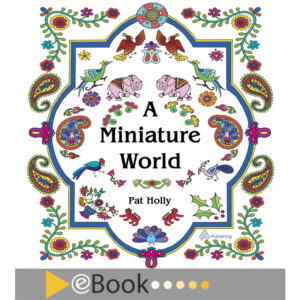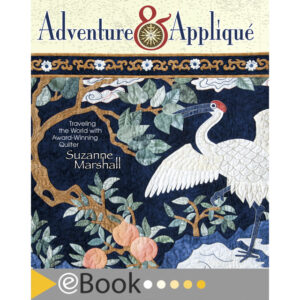
Triangle Tango by Gwen Marston and Freddy Moran, 64″ X 62″ from Free Range Triangle Quilts by Gwen Marston and Cathy Jones (pg. 82).
This beautiful quilt is a great example of a quilt full of rows attached to a center. Each row requires careful layout and measurement to fit just right. Triangle Tango is illustrates making do! This quilt was deliberately pieced with creative play in mind. Look at the fun examples of ways the rows work themselves out.
If you find yourself in a predicament with rows that won’t work themselves out, take a look at a few of these clever suggestions to fill the gap or handle an overlap.

No. 1 – Split the difference
- Measure the row against the center. If the row is short, figure out how much you need to fill the gap. Divide that number in half – one for each end of the row! Add seam allowances and you are back in business!

No. 2 – Make a statement
- If the row is short, figure the gap needed to fill and add seam allowances. Make a special block to fill the space by sewing colorful strips of fabric together. Trim the special block to fit, and sew it to one end of the row.

No. 3 – Add squares
- If the row is short, figure the gap needed to fill and divide the number in half. After adding seam allowances, figure out how many squares it would take to fill each space. Create two blocks of squares for each end of the row.

No. 4 – Chop a block
- If the row is short, figure out the gap space and divide the number in half. Add seam allowances, then add the two numbers together to determine a block width. Find a left over block (or create one) that will cover the width. Cut it in half. Sew one half on one end and one half on the other.

No. 5 – Fussy cut additions
- If the row is short, figure out the gap space and divide the number in half. Add seam allowances. Hunt through your stash for fun fabric with critters or small design elements to hide in the gaps. Add one to each end.

No. 6 – Chop evenly
- If the row is too long, cut a bit from each end equally.

No. 7 – Chop unevenly
- If the row is too long, lop one end off.

No. 8 – Cut down and add on
- If the row is too long, it may be better to remove a block from the row making it too short, then use one of the above suggestions for handling a short row.
Looking for more fun ideas? Try out Gwen Marston’s Free Range Triangles or Liberated Quiltmaking series.
My Quilt Story Project
Life is just like the rows described above, sometimes things don’t work out just right and require a little creativity. As you move toward putting your quilt story quilt together, collect ideas, fabrics, and blocks to help fill the gaps in your quilt.
Want to catch up on the rest of the project? Here are the details:
Between now and Fall Paducah in September, we invite you on a special creative adventure. Each week we will offer you ideas, techniques, blocks, and embellishments to help you tell your quilt story in stitches.
If you didn’t catch the beginning of the project, visit here for the quilt story worksheet.
Did you remake your first block? You can find some help here.
Have you decided on the monuments representing the moments that changed your quilt story? Here’s a look at how to start.
Are you building your town? See how we built a building.
Have you created a quilting garden? See some sample blocks here.
What quilt construction techniques have you learned along your journey? Take a look at our list.
Want to add some memorabilia? Take a look at our quilt blocks great for showing off your favorite quilting pins.
Do you have special people who filled your quilting heart through the years? Here’s an idea to include them in your quilt.
Do you have special fabric collections you’ve been saving for years and want to include with a special commemorative block? Take a look at our Original Memory Collage Block!
What about those orphan blocks from past projects, inherited blocks that haven’t found a home? Turn your forsaken & forgotten blocks into treasures.
Have you noticed your color selections for your quilts change through the years? Record your color history by creating a block to display your color preferences through your quilting journey.
Add a map block to your quilt story project. Maybe it’s a place that inspires you or holds dear memories of quilting friends.
Keep a count of your quilt projects on your Quilt Story quilt.
Make a family tree of life block.
 eBook A Miniature World
1 × $18.95
eBook A Miniature World
1 × $18.95  eBook Adventure & Applique
1 × $19.95
eBook Adventure & Applique
1 × $19.95